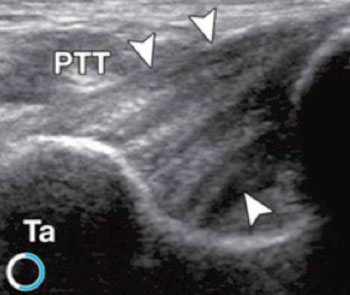High-Resolution Ultrasound and MRI for Management of Peroneal Tendon Injuries
By MedImaging International staff writers
Posted on 09 Feb 2015
Diagnosis of patients with chronic lateral ankle pain, from a sprained ankle for example, needs to include investigation for possible damage to the peroneal tendon complex according to research published in the January-February 2015 issue of the Radiological Society of North America (RSNA) RadioGraphics journal.Posted on 09 Feb 2015
Damage to the peroneus brevis or peroneus longus tendons may be a result of trauma, repeated microtrauma from instability, or from existing tendinopathy.

Image: Dynamic High-Resolution US of Ankle and Midfoot Ligaments: Normal Anatomic Structure and Imaging Technique (Photo courtesy of RadioGraphics Journal).
To help orthopedic surgeons with evaluation and diagnosis of peroneal tendon injuries the researchers recommend using high-resolution Magnetic Resonance Imaging (MRI) (1.5-T and 3-T scanners) with dedicated extremity coils, and high-resolution Ultrasound (US), with high-frequency linear transducers, and dynamic imaging.
The combination of MRI scans and high-resolution Ultrasound should allow radiologists to recognize the normal anatomy and pathology of peroneal tendon injuries (partial- and full-thickness tears, subluxation, and dislocation for example) and decide on the best treatment for superior peroneal retinaculum (SPR) and peroneal tendon injuries.
Related Links:
RSNA














